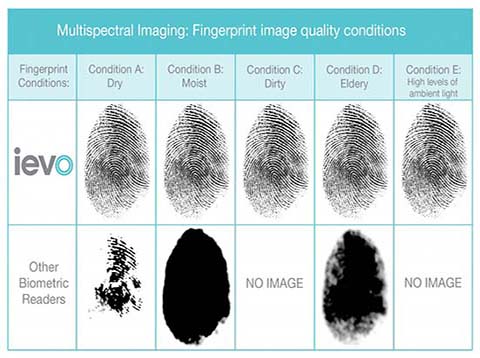How Biometric Access Control Readers Work
10 April 2019

The Use of Biometric Access Control Readers
Access control systems manufacturers are evolving their eco-systems through integrations with specialist technologies to meet the needs of their clients in a rapidly changing security industry. Whilst the Remsdaq Entro series is a complete eco-system in its own right, the recent addition of a range of complimentary Biometric access control readers from IEVO provides Entro installations with new security features and options for zoning within their buildings.
What Are Biometrics?
Biometrics is a term used to described measurable and unique human characteristics. Within access control, biometric-based readers provide a secure level of authentication based on unique physiological reference points. The most common biometric is a finger print with others including pal recognition, iris scanners, facial scanners and even DNA.
What Are The Advantages of Biometric Security?
Biometric security provides an alternative to MIFARE cards, and traditional password and PIN-based methods. Biometrics can prevent credential sharing, ‘buddy punching’ where one person signs in for another using their card or key fob to gain access to a restricted building or area within.
Biometric security removes the need to carry a credential in the form of a card, key fob or mobile phone and removes security risks associated with their loss. Biometric security can also provide an alternative to card readers and keypads in areas including laboratories and food processing sites where the operators using the doors are wearing latex gloves for protection and hygiene.
How Do Biometric Access Control Readers Work?
The first stage in using biometric readers within an access control system is to add a finger print credential to the user database. This is done using an IEVO scanner to register an advanced image reading and detailed scan of a finer surface and subsurface skin levels. This creates a highly accurate digital fingerprint image from which specific data is converted into the digital template then used for verification by an IEVO biometric reader such as the Micro or Ultimate.
When door access is required, provided the user presents their finger and this matches the stored template, then access or granted. Otherwise it is denied. For added security, the IEVO has developed an advanced registration algorithm so that the fingerprint data cannot be reversed engineered to replicate and the data for the template is not stored in the fingerprint reader heads.
The Remsdaq and IEVO integration includes the Micro and Ultimate biometric readers.
